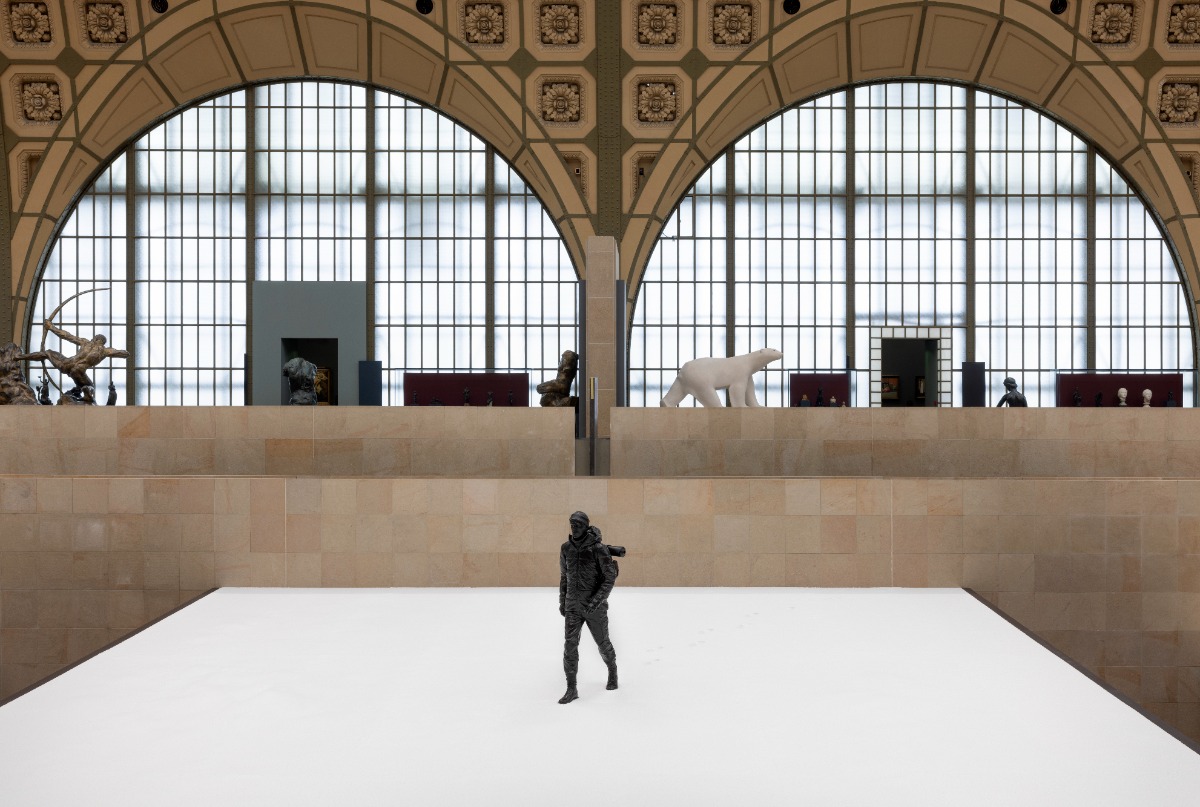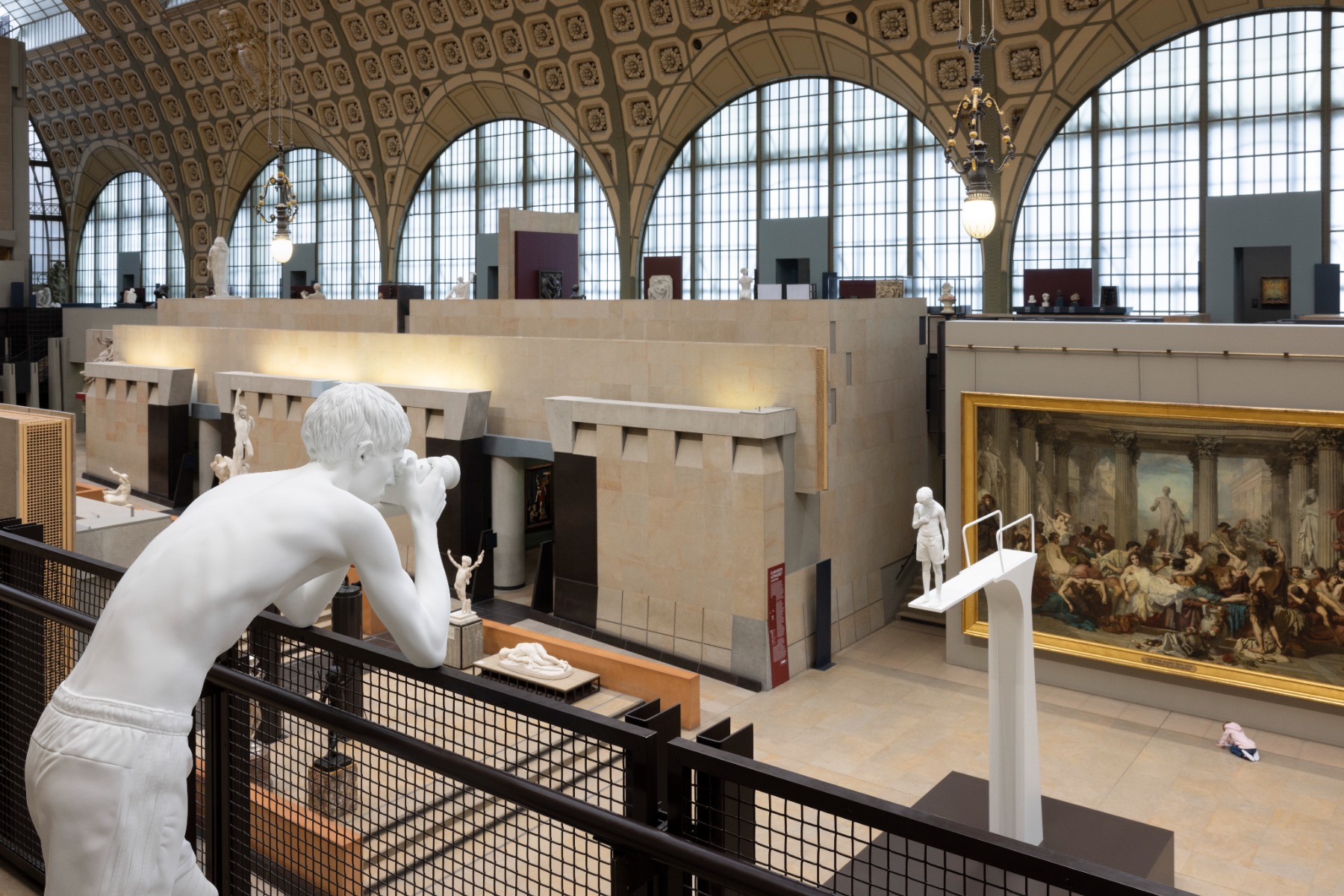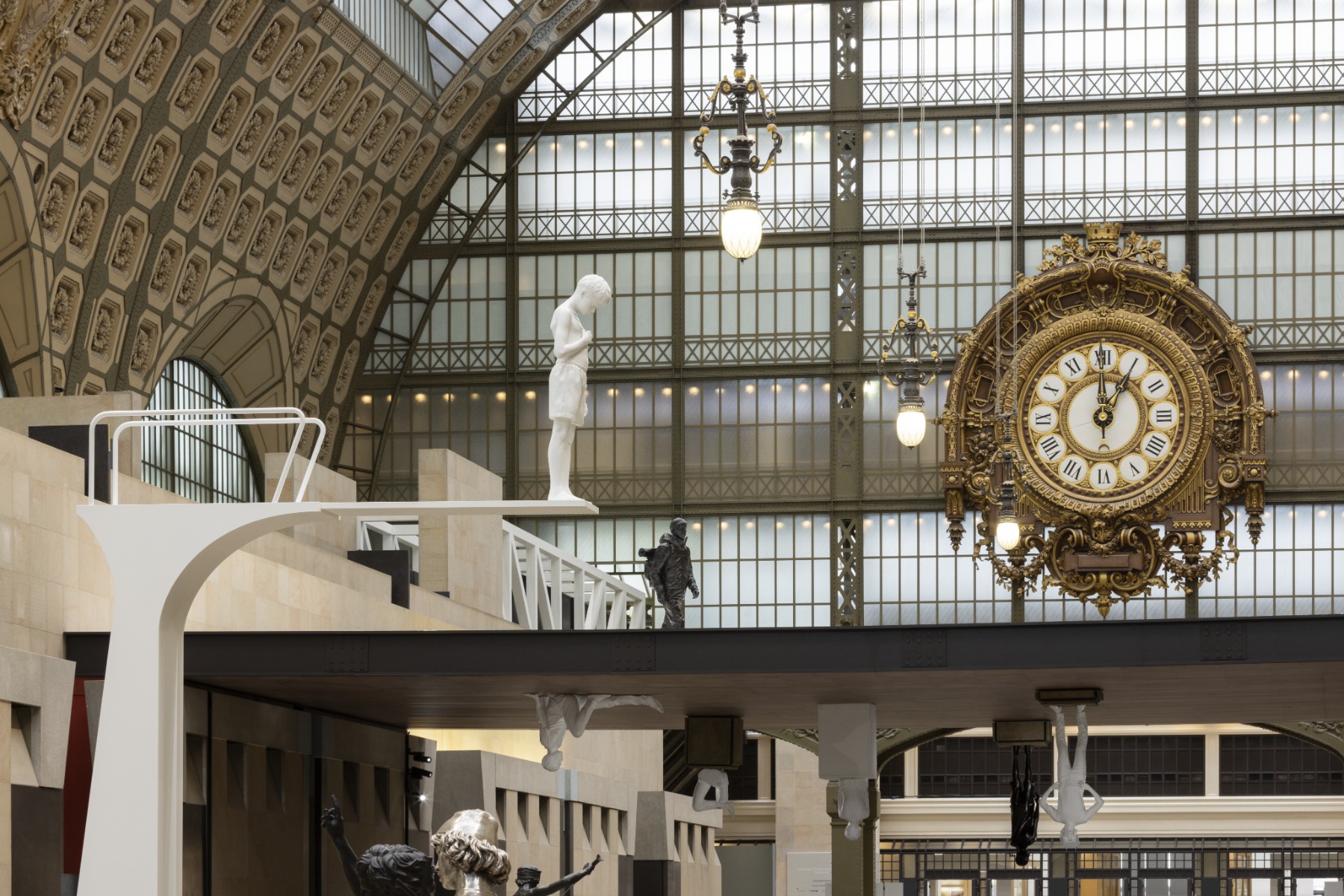
Elmgreen & Dragset: Trans-Historical Flirtation
Scandinavian artist duo Elmgreen & Dragset at Paris’ Orsay Museum until February 2, 2025
The latest exhibition-diversion by Scandinavian artist duo Elmgreen & Dragset can be seen at Paris’ Orsay Museum until February 2, 2025. Titled L'Addition, the exhibition is dedicated to intervening in the museum itself. The Orsay Museum booklet introduces a striking term: “trans-historical flirtation.” As it turns out, this flirtation is both timely and meaningful.
Photo: © 2024 Andrea Rossetti © Adagp, Paris, 2024
Museums don’t just accumulate sublime emotions within us; they’re also often associated with the preservation of emotions drained of life, or sometimes, simply with boredom. Most visitors come to the Musée d'Orsay to go straight up to the 5th floor to see Van Gogh, Cézanne, and the Impressionists. Far less attention is paid to the central nave of the former Orsay station, where sculptures from the historicism era of the late 19th century march in a kind of staid procession, clustered close together – and not to their advantage. The style of these sculptures is pompous, even pretentious, and is sometimes referred to as salon academicism. Moreover, this bustle of antique youths and bearded heroes tends to annoy more than inspire, interfering with the flow and openness of the space. This old-fashioned collection, then, is where Elmgreen & Dragset decided to intervene. The artists set out to stir up this sleepy kingdom of frozen heroes – to revive them and bring them to new life.
Photo: © 2024 Andrea Rossetti © Adagp, Paris, 2024
They created realistic resin sculptures of teenagers who become tricksters in relation to the academic sculptures, and they installed them carnival-style: upside down, hanging directly above the marble and bronze figures of the Orsay Museum. A teenager with a drone hovers above Anacreon Releasing a Dove (1851, Eugène Guillaume). A barefoot ephebe, posed like Boy Pulling a Thorn (1869, Jean-Joseph Desespoire), is reflected in a warped parodic mirror; above him, a relaxed student’s legs hang down in dirty socks. A medieval troubadour in tight pants plays his mandolin (Paul Dubois, 1865) and now finds his counterpart in a guy wearing headphones, likely listening to rap. Beside the massive reliefs of ancient sages reading, there’s a boy with virtual reality glasses. And a hyper-realistic wax boy – like something out of a trompe l'oeil – draws on the floor near Thomas Couture’s 1847 painting, Romans of the Decadence.
Photo: © 2024 Andrea Rossetti © Adagp, Paris, 2024
This intervention doesn’t offend; rather, it refreshes our optics, clearing away some of the dust and detachment from this old-fashioned, alienated world. These new heroes help reveal that the ephebes of antiquity lived by ideas not so different from ours, after all. Elmgreen & Dragset invite us to open up these figures, exposing their detachment and pomposity to the outside, making them welcoming and friendly. It’s fascinating to see students from the Paris School of Fine Arts gathering around these academic sculptures, sketching them, sitting in poses that mirror the new figures in Elmgreen & Dragset’s installation – headphones in, notebooks out, wearing shorts, sneakers, and Adidas socks.
Photo: © 2024 Andrea Rossetti © Adagp, Paris, 2024
This dialogue carries a social message, too. Lovers of “the high” arts have traditionally been associated with the elite – a closed, caste-like circle. But it’s time to reconsider these canons and templates. Old hierarchies and the rigid canon only serve to constrain art, stifling work that was once dismissed by progressive critics as conservative and decadent. Today, this salon calls for revision, with the potential to open new channels of communication in a hybrid, metamodernist world.
Photo: © 2024 Andrea Rossetti © Adagp, Paris, 2024
In this context, queer aesthetics also become significant – a theme that Elmgreen & Dragset approach not with a poster-like declaration but with subtle, immanent gestures. Salon academicism and queer culture share a close bond. The naked heroes of historicism and decadence were often painted with intentional sensuality and languid passion, very much erotically charged. Sometimes, the subject matter carries a gay subtext, as in a large painting by Henry Lévy, Sarpedon(1874), hanging in the gallery adjacent to the sculpture nave. The scene shows a beautiful naked hero, son of Zeus and Laodamia, carried through the clouds by Zeus, Apollo, Hypnos and Thanatos after being slain by Patroclus. Sarpedon, king of Lycia, had fled from Crete following a love rivalry with his brother Minos over Apollo’s son Miletus.
Photo: © 2024 Andrea Rossetti © Adagp, Paris, 2024
Homoerotic themes are woven into many academic works from the Enlightenment through the decadence of the 19th and early 20th centuries. To overlook this is to impoverish the social and psychological dimensions in interpreting these images. Let’s not forget Johann Joachim Winckelmann, the father of art criticism, who described the spirit of antiquity as embodying “noble simplicity and calm grandeur” – and who was openly gay. Winckelmann’s obsession with white antiquity partly projected the psyche’s reception of an ideal that was queer. His artist friend Mengs even played a prank, painting a mock fresco of Zeus kissing the young Ganymede and then claiming it was a relic from Pompeii. Winckelmann believed him, declaring it an authentic masterpiece of high antiquity.
Photo: © 2024 Andrea Rossetti © Adagp, Paris, 2024
The passions for antiquity and the classics have always been intertwined with different criteria of visual pleasure, often imbued with queer aesthetics. Elmgreen & Dragset openly acknowledge this today, right here in the languid halls of academicism. Contemporary art helps tune our optics to perceive the ancient as something alive rather than obsolete.


